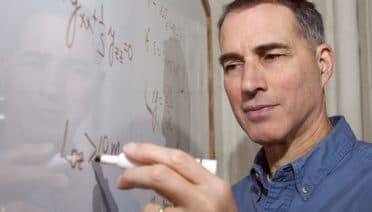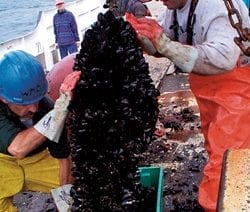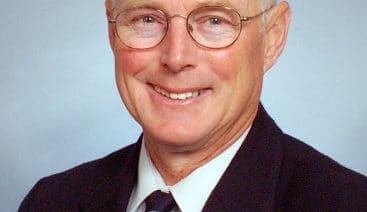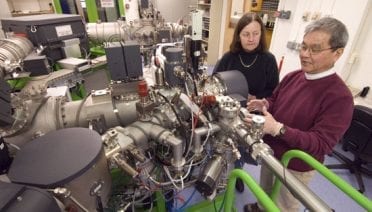Press Room
Climate is often discussed in global terms, but it is the regional and local effects that will matter most to everyday people. WHOI geologist Jeff Donnelly and colleagues are looking closely at the regional effects of a past period of…
Researchers from the Woods Hole Oceanographic Institution (WHOI) have found a new and substantial pathway for mercury pollution flowing into coastal waters. Marine chemists have detected much more dissolved mercury entering the ocean through groundwater than from atmospheric and river sources.
With growing global populations and ever-increasing demands for seafood, fish farms are expected to expand significantly over the next few decades. But is aquaculture economically sustainable? Do the benefits outweigh the costs when all of the relevant environmental factors are…
Whyvillians have a problem: harmful algae are threatening their beaches and coastal ecosystem. In order to investigate, understand, and mitigate the problem, citizens are turning to the Whyville Oceanographic Institution (WhOI), with its boats, its underwater laboratories, and other resources…
Oceanographer Jim Ledwell of the Woods Hole Oceanographic Institution (WHOI) has been selected as the winner of the 2007 Alexander Agassiz Medal, awarded by the U.S. National Academy of Sciences (NAS). Ledwell, a senior scientist in the Department of Applied…
Listen to the first call between ocean explorers and astronauts.
Media Advisory WHAT: Fire and Ice Climate Changes of the Past…and Future? A public debate on the lessons from a previous warm interval in Earth’s climate history The Third Elisabeth and Henry Morss Jr. Colloquium WHEN: Tuesday, January 30, 2007…
Congress should enact legislation to ensure that strong environmental standards are in place to regulate the siting and conduct of offshore marine aquaculture, according to an independent panel of leaders from scientific, policymaking, business, and conservation institutions. Organized by researchers from the Woods Hole Oceanographic Institution, the Marine Aquaculture Task Force was charged with examining the risks and benefits of marine aquaculture and developing a set of national policy recommendations to guide future development in our oceans.
John A. Whitehead awarded AMS’s Stommel Award ?for his fundamental contributions to geophysical fluid dynamics and physical oceanography, for which his laboratory and observational studies of rotating hydraulic flows have been particularly illuminating.?
Eggs for Breakfast This egg sac of Euchaeta norvegica, a copepod, turned up in researchers’ plankton nets as they were being towed by the Albatross IV through the waters around Cape Cod. Researchers have been studying the many strands…
A multidisciplinary research team from six institutions has for the first time successfully anticipated and then chronicled a seafloor eruption along the global mid-ocean ridge, the most active volcanic system on Earth. The event along the East Pacific Rise has provided researchers from Woods Hole Oceanographic Institution (WHOI) with a rare opportunity to observe what happens in the immediate aftermath of an eruption.
Nobumichi Shimizu Has Been Named a Fellow of the American Association for the Advancement of Science
Nobumichi Shimizu of the Woods Hole Oceanographic Institution (WHOI) has been named a fellow of the American Association for the Advancement of Science (AAAS). Election as a fellow is an honor bestowed upon AAAS members by their peers. A member…
With more than 25 percent of the planet lying between the Tropics of Cancer and Capricorn, researchers at Woods Hole Oceanographic Institution (WHOI) are taking advantage of a recent gift to expand studies from Panama to Palau and elsewhere around…
A longtime Osterville resident who loved the oceans and supported the Woods Hole Oceanographic Institution for more than four decades before he died in 2005 has left a $1 million gift to the Institution. The funds will be used for…
The Sea Urchin Genome Sequencing Consortium, a group of 240 researchers from more than 70 institutions in 11 countries, recently announced the sequencing of the California purple sea urchin, Strongylocentrotus purpuratus.
Four researchers have been recognized by the Woods Hole Oceanographic Institution (WHOI) for their contributions to ocean sciences research and engineering. All will receive funding provided by the endowed awards to support their research over periods of three to five…
WHOI scientists and colleagues at the University of Connecticut have found the first connection between mercury levels in freshwater fish and atmospheric mercury pollution, most of which is derived from fossil fuel combustion. By comparing results from large databases for…
The Large Area Plankton Imaging System, or LAPIS, is providing biologists with a new tool to study plankton to depths of 500 meters (1,640 feet). Until now, fragile gelatinous animals have been damaged or destroyed by nets, which animals can…
A 50-meter (165-foot) long coring system nearing completion at WHOI will enable paleoceanographers to reconstruct past climates back tens of millions of years and expand the coring capabilities of the U.S. academic research fleet. The Institution’s 279-foot research vessel Knorr,…
A study of ten beaked whales of two poorly understood species shows they dive much deeper and longer than reported for any other air-breathing species, a finding of particular interest since beaked whales stranded during naval sonar exercises have been reported to have symptoms of decompression sickness.




